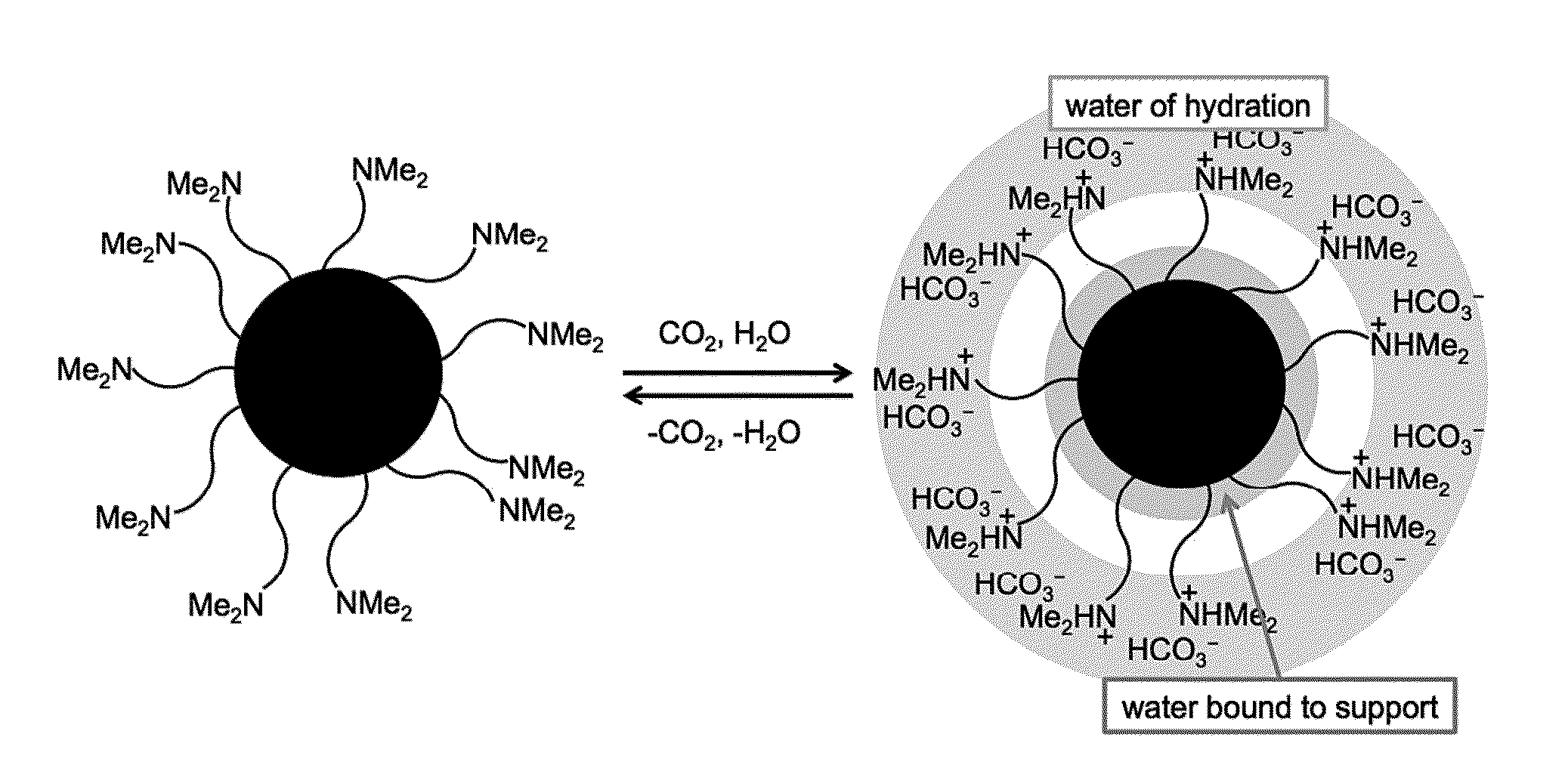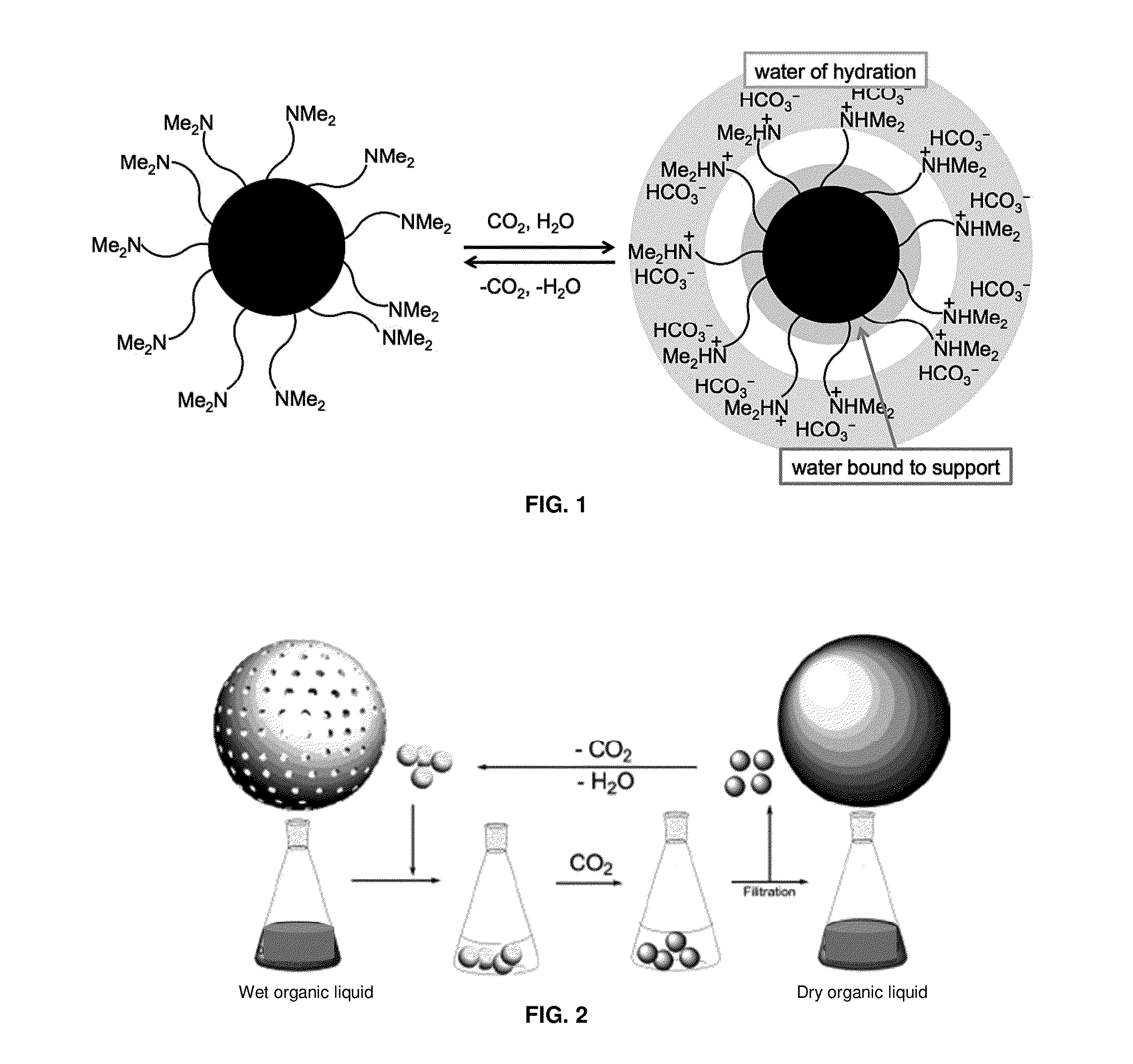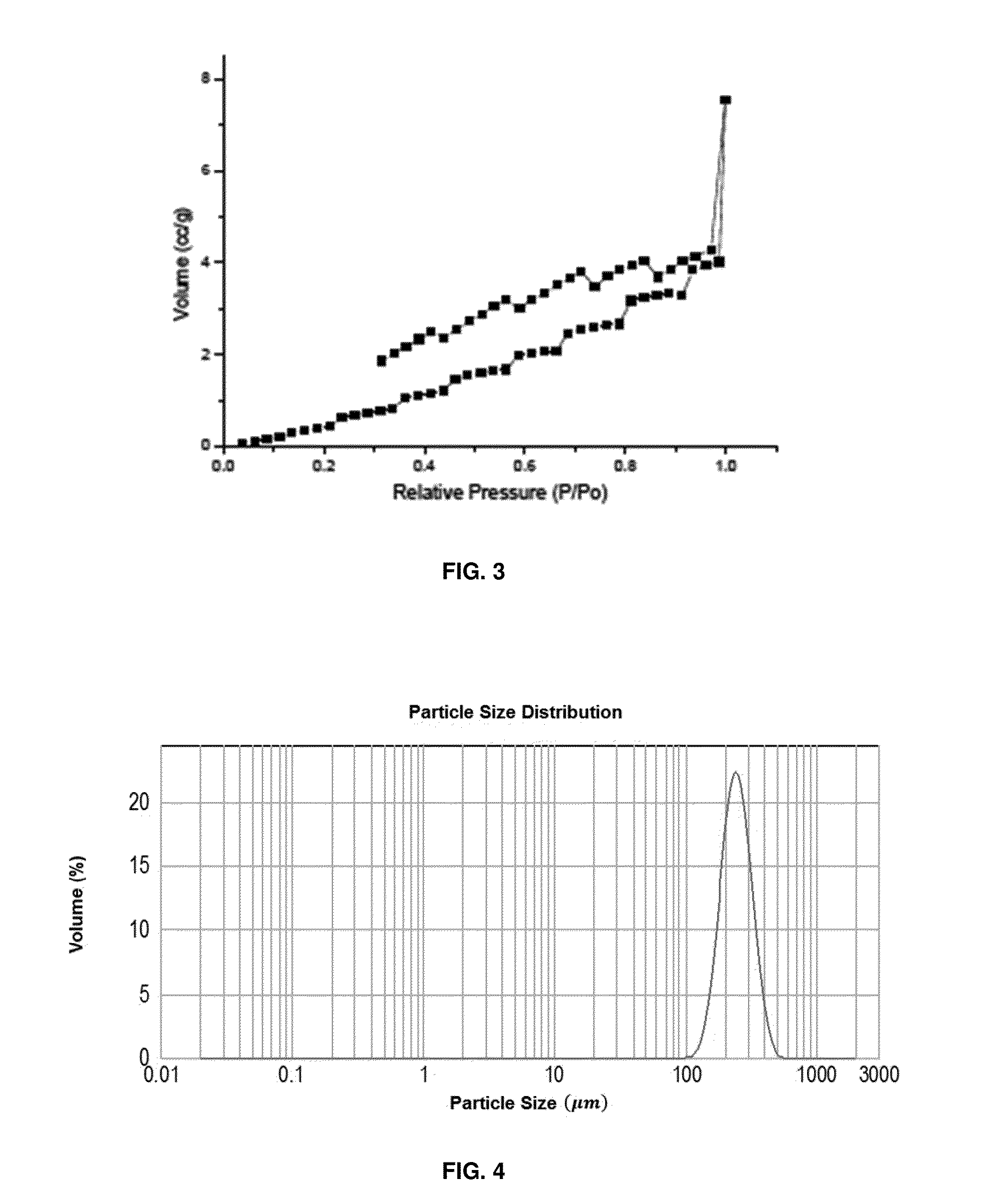Switchable materials, methods and uses thereof
a technology of switchable materials and switches, applied in the field of switchable materials, can solve the problems of fuel system components such as fuel and injector pumps, corrosion of fuel system components, and high cost of water removal from non-aqueous liquids
- Summary
- Abstract
- Description
- Claims
- Application Information
AI Technical Summary
Benefits of technology
Problems solved by technology
Method used
Image
Examples
example 1
Synthesis of 1,4-bis(diethylamino)-2,3-butanediol
[0151]
[0152]Potassium hydroxide (KOH (8.75 g, 0.151 mol) was dissolved in deionized water at 0° C. and diethylamine (25 mL, 0.242 mol) was added. After 10 min, 2,3-dibromo-1,4-butanediol (15.1 g, 0.0605 mmol) was added into the aqueous solution. The reaction mixture was kept stirring for 18 h and then heated up to 50° C. The reaction solution was kept at 50° C. overnight. When water and excess diethylamine was removed under reduced pressure, dimethyl carbonate (50 ml) was mixed with the residue, and any filtrate was collected. After removing dimethyl carbonate under reduced pressure, pure 1,4-bis(diethylamino)-2,3-butanediol was obtained (7.62 g, 54%). 1H NMR (400 MHz, CDCl3): δ (ppm)=3.77 (t, 12H, J=5.7 Hz), 2.71-2.57 (m, 12H), 1.06 (t, 12H, J=7.1 Hz); 13C{1H} NMR (100 MHz, CDCl3): δ (ppm) 68.8, 56.4, 47.3, 11.6; HRMS (m / z): [M]+ calcd. C12H28N2O2, 232.2151, found 232.2157.
example 2
Synthesis of Crosslinkable Methylmethacrylate Monomer, 1,4-bis(diethylamino)-2,3-bismethacryoloxybutanoate
[0153]
[0154]1,4-Bis(diethylamino)-2,3-butanediol (6.9 g, 30 mmol) and triethylamine (20 mL) in anhydrous dimethyl carbonate (DMC, 150 mL) were cooled to 10° C. under a nitrogen atmosphere. Methacryloyl chloride (7.2 mL, 74 mmol) in dimethyl carbonate (solvent, 50 mL) was added via a syringe. The reaction mixture was magnetically stirred overnight. A salt by-product was removed from the reaction mixture by filtration, and a product-containing filtrate was washed twice with water (purified with a Millipore Synergy Ultrapure Water Systems) to remove excess triethylamine. The non-aqueous phase was dried over magnesium sulfate (MgSO4), and the mixture was filtered through a basic alumina column once the solvent was removed. The product remained as a pale yellow solid (8.9 g, 81%). 1H NMR (400 MHz, CDCl3): δ (ppm)=6.15-6.00 (m, 2H), 5.51-5.49 (m, 2H), 5.30-5.24 (m, 2H), 2.60-2.37 (m, ...
example 3
Preparation of Polymer Beads via Suspension Polymerization
[0155]1,4-Bis(diethylamino)-2,3-bismethacryoloxybutanoate (2.73 g, 7.4 mmol) and azobisisobutyronitrile (AlBN) (12 mg, 0.073 mmol) were dissolved in toluene (4 mL) with magnetic stirring; O2(g) was displaced from the mixture by bubbling N2(g) through the mixture.
[0156]Polyvinyl alcohol (87-89% hydrolyzed, average Mw 124000-186000, 0.4 g) and water (40 mL) in a 250 mL round bottom flask were mechanically stirred with an overhead stirrer at 300 RPM and bubbled with N2(g) until the polymer was dissolved. Once the non-aqueous solution containing 1,4-bis(diethylamino)-2,3-bismethacryoloxybutanoate and AlBN was added to the aqueous polyvinyl alcohol solution, the mixture was bubbled with N2(g) and heated to 80° C. After 4 h at that temperature, the mixture was cooled down under ambient conditions and filtered through a Buchner funnel under vacuum. Polymer beads were washed three times with water (purified with a Millipore Synergy U...
PUM
| Property | Measurement | Unit |
|---|---|---|
| Temperature | aaaaa | aaaaa |
| Temperature | aaaaa | aaaaa |
| Temperature | aaaaa | aaaaa |
Abstract
Description
Claims
Application Information
 Login to View More
Login to View More - R&D
- Intellectual Property
- Life Sciences
- Materials
- Tech Scout
- Unparalleled Data Quality
- Higher Quality Content
- 60% Fewer Hallucinations
Browse by: Latest US Patents, China's latest patents, Technical Efficacy Thesaurus, Application Domain, Technology Topic, Popular Technical Reports.
© 2025 PatSnap. All rights reserved.Legal|Privacy policy|Modern Slavery Act Transparency Statement|Sitemap|About US| Contact US: help@patsnap.com



